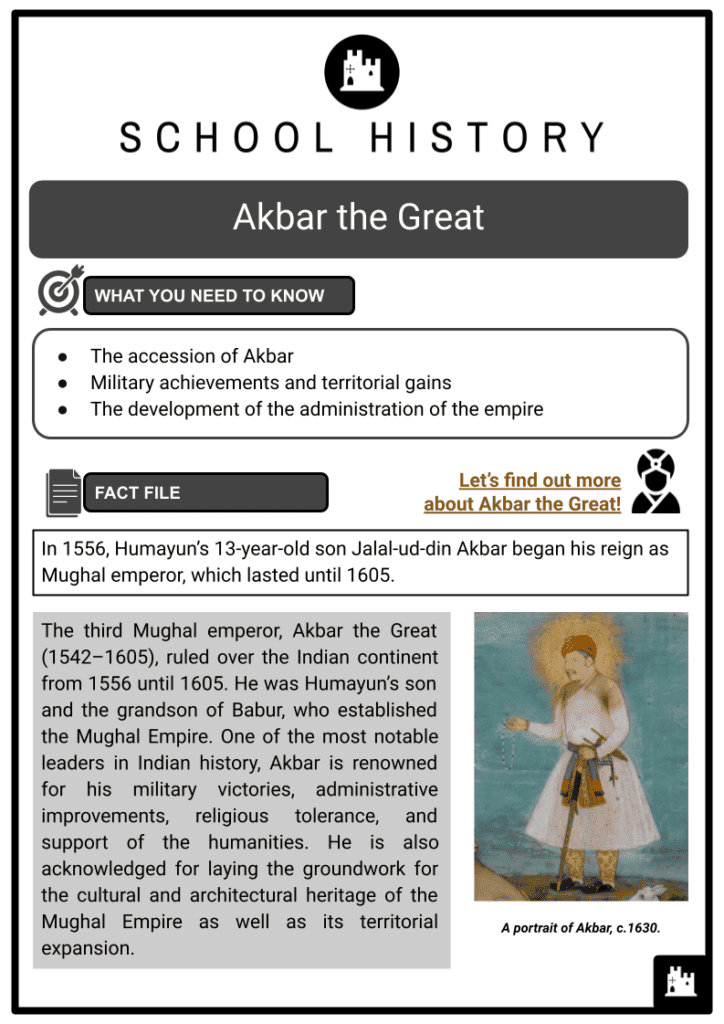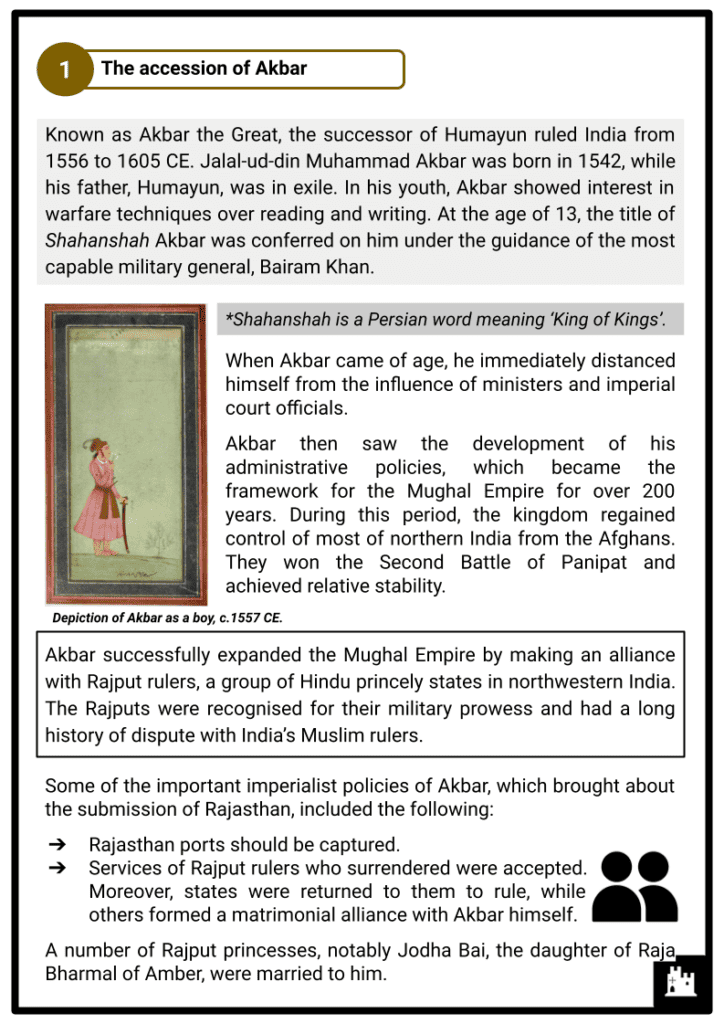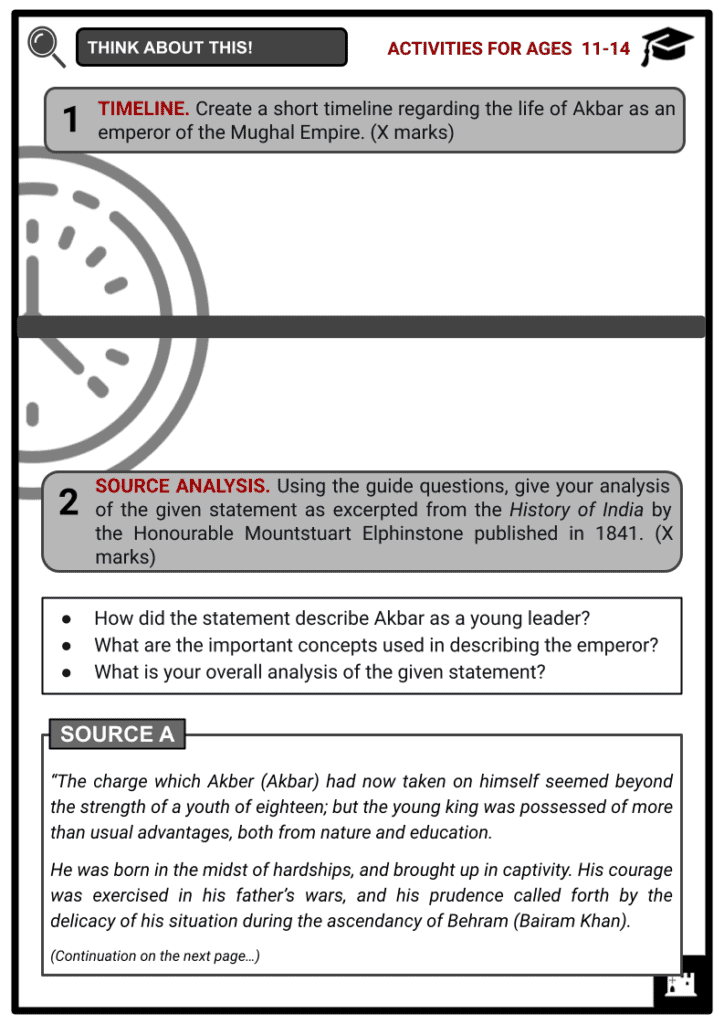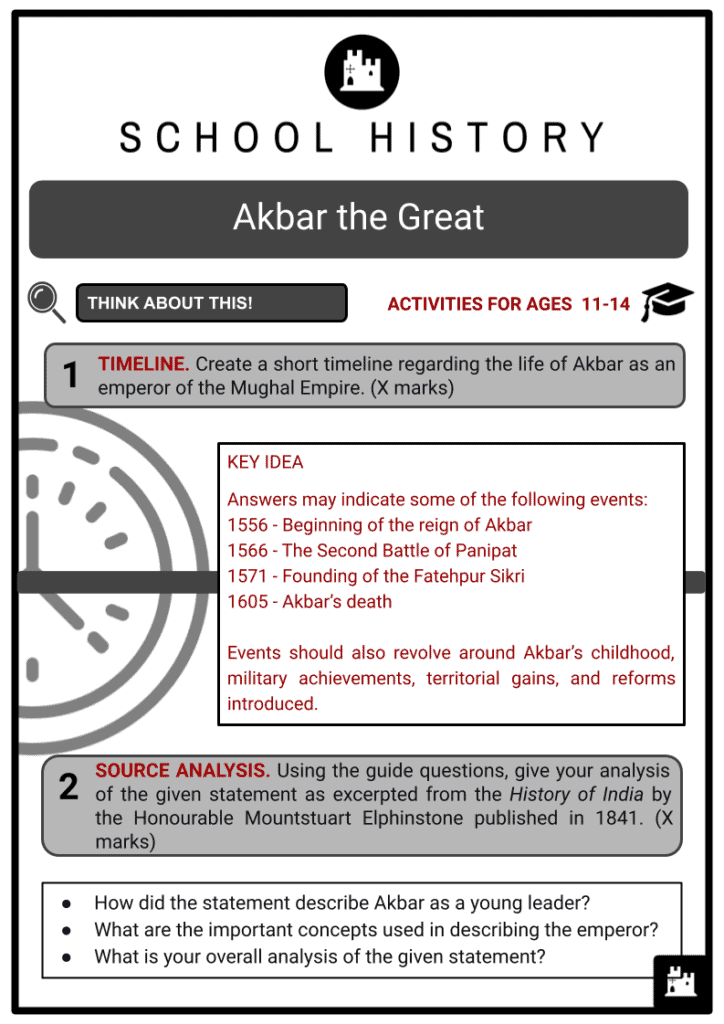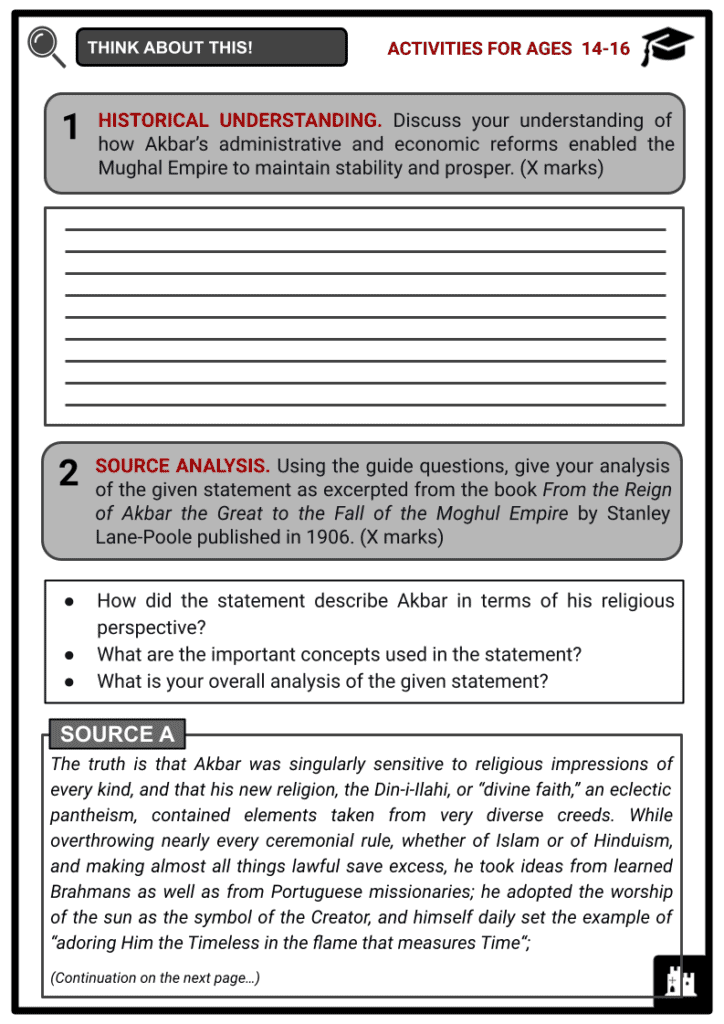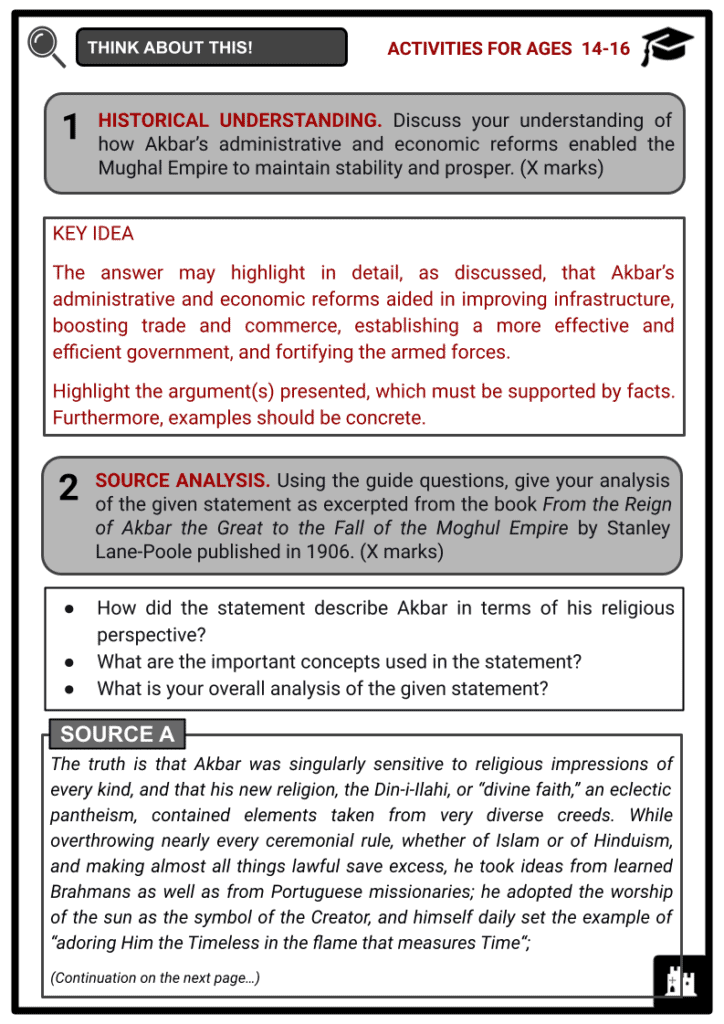Akbar the Great Worksheets
Do you want to save dozens of hours in time? Get your evenings and weekends back? Be able to teach about Akbar the Great to your students?
Our worksheet bundle includes a fact file and printable worksheets and student activities. Perfect for both the classroom and homeschooling!
Summary
- The accession of Akbar
- Military achievements and territorial gains
- The development of the administration of the empire
Key Facts And Information
Let’s find out more about Akbar the Great!
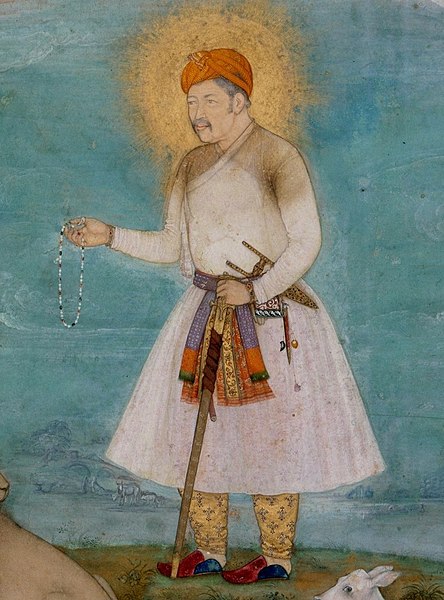
In 1556, Humayun’s 13-year-old son Jalal-ud-din Akbar began his reign as Mughal emperor, which lasted until 1605. The third Mughal emperor, Akbar the Great (1542–1605), ruled over the Indian continent from 1556 until 1605. He was Humayun’s son and the grandson of Babur, who established the Mughal Empire. One of the most notable leaders in Indian history, Akbar is renowned for his military victories, administrative improvements, religious tolerance, and support of the humanities. He is also acknowledged for laying the groundwork for the cultural and architectural heritage of the Mughal Empire as well as its territorial expansion.
The accession of Akbar
- Known as Akbar the Great, the successor of Humayun ruled India from 1556 to 1605 CE. Jalal-ud-din Muhammad Akbar was born in 1542, while his father, Humayun, was in exile. In his youth, Akbar showed interest in warfare techniques over reading and writing. At the age of 13, the title of Shahanshah Akbar was conferred on him under the guidance of the most capable military general, Bairam Khan.
*Shahanshah is a Persian word meaning ‘King of Kings’.
- When Akbar came of age, he immediately distanced himself from the influence of ministers and imperial court officials. Akbar then saw the development of his administrative policies, which became the framework for the Mughal Empire for over 200 years. During this period, the kingdom regained control of most of northern India from the Afghans. They won the Second Battle of Panipat and achieved relative stability.
- Akbar successfully expanded the Mughal Empire by making an alliance with Rajput rulers, a group of Hindu princely states in northwestern India. The Rajputs were recognised for their military prowess and had a long history of dispute with India’s Muslim rulers.
- Some of the important imperialist policies of Akbar, which brought about the submission of Rajasthan, included the following:
- Rajasthan ports should be captured.
- Services of Rajput rulers who surrendered were accepted. Moreover, states were returned to them to rule, while others formed a matrimonial alliance with Akbar himself.
- A number of Rajput princesses, notably Jodha Bai, the daughter of Raja Bharmal of Amber, were married to him.
- The political ties between the Mughals and the Rajputs were strengthened by these marriages, which also promoted communication and understanding on a cultural level.
- At the end of Akbar’s expansion, all Rajput rulers, except Rana Pratap of Mewar, submitted to him voluntarily. Through a combination of military power and diplomacy, Akbar was able to win over many Rajput rulers and huge parts of Mewar were conquered forcefully.
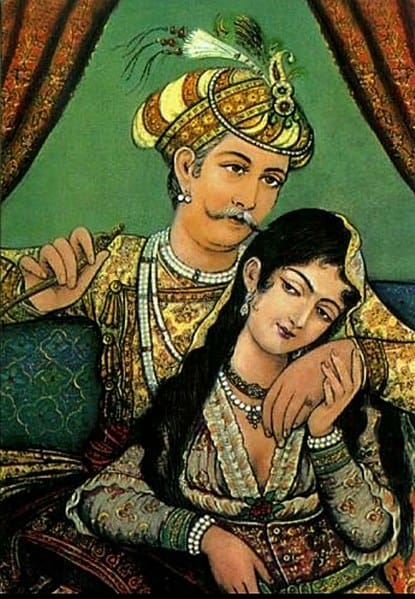
A portrait of Akbar with empress consort Jodha Bai, c. early 16th century. - Akbar also recruited a number of Rajput nobles to significant posts in his court. He was aware of the Rajputs’ military strength and frequently enlisted their assistance in his military expeditions, such as the Battle of Haldighati in 1576, in which Rajput warriors participated in combat alongside Mughal armies.
- Akbar was able to earn the loyalty of his conquered people. Moreover, he was known for rewarding people who showed loyalty, intellect and talent. Instead of imposing a high tribute tax for revenue, Akbar created a central government in which conquered territories were left unsupervised.
Military achievements and territorial gains
- Akbar led numerous military campaigns and conquered vast territories across the Indian subcontinent. He invaded far-flung territories bordered by Kabul in the northwest, Kashmir in the north, Bengal in the east, and beyond the Narmada River in central India.
- 1556 Second Battle of Panipat. On 5 November 1556, the Second Battle of Panipat took place between the forces of Mughal emperor Akbar and the army of Afghan ruler Hemu. The fight is regarded as one of India’s largest and bloodiest waged during the period.
- After defeating the Mughal governor in Agra, Samrat Hem Chandra Vikramaditya, popularly known as Hemu, the Prime Minister of the Afghan king of Delhi, crowned himself the ruler of North India. He commanded a strong army and was backed by a number of powerful Hindu kingdoms in North India, especially the Rajputs.
- Akbar, who was only 13 years old at that time, was assisted by his regent, Bairam Khan. They led the Mughal army in the war against Hemu. Despite being outnumbered, they were well-organised and equipped with superior artillery. Hemu, who led his army by riding an elephant, was struck by an arrow and fell unconscious. Hence, the Afghan army was thrown into uncertainty and chaos, and the Mughals seized the opportunity to launch a counterattack.
- The Afghan resistance in North India came to an end with the battle, which saw a resounding triumph for the Mughals. The empire was strengthened by Akbar’s victory at the Second Battle of Panipat, which also paved the way for the spread of Mughal power throughout the Indian subcontinent.
- Throughout his reign, Akbar expanded the empire’s territory into Afghanistan in the north, Sindh in the west, Godavari River in the south, and Bengal in the east. His other notable military achievements include:
- 1572 Conquest of Gujarat. Ahmedabad, the state’s capital, was taken by Akbar after a victorious military campaign against its Sultan, bringing Gujarat under the Mughal administration.
- 1586 Conquest of Kashmir. The mountainous region of Kashmir under the Chak dynasty was captured.
- In 1591, Akbar attempted to seize south India, specifically Khandesh and Ahmadnagar. Ali Khan, leader of Khandesh, accepted the offer of Akbar and agreed to pay an annual contribution or tribute. Other states who refused to submit peacefully were conquered in the following years.
- 1601 Conquest of Khandesh. Akbar led a military campaign against the Nizam Shahi dynasty, which ruled over a vital area on India’s western coast. His army was successful in bringing Khandesh under Mughal rule.
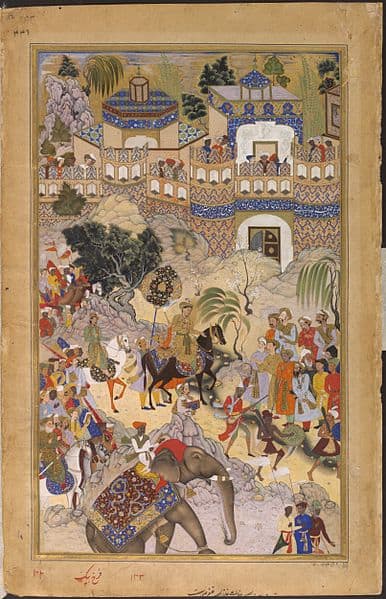
Depiction of victorious entry in Surat, a city in Gujarat, c.1590.
The development of the administration of the empire
- Despite his dislike for academics, Akbar had immense reformative ideas and will as an administrator. Instead of forcefully imposing his power as a conqueror, Akbar designed a centralised government to attain loyalty of his new subjects.
- Throughout his reign, Akbar instituted various administrative reforms that aided the empire’s efficient operation. Among the most significant developments during Akbar’s reign were:
- Centralised government
- Legislative and judicial reforms
- Financial administration including a land revenue system
- Religious tolerance
- Educational and cultural developments
CENTRALISED GOVERNMENT
- Akbar served as the head of the kingdom.
PROVINCIAL ADMINISTRATION
- Akbar’s kingdom was divided into 15 Subas or provincial entities. This included the following officials:
- Subedar, overall in charge of provincial development
- Diwaan on the matters of finances and bills
- Sadr on judicial matters and charity to people
- Kotwaal on law and order on state levels
- Mir Baksh on local taxes and collection of revenue
- Waqr-Nawis were secret detectives and spy services
MILITARY ADMINISTRATION
- Mansabdars were Akbar’s direct officials in the military who took care of the soldiers’ needs, including the following:
- Payment
- Treatment when injured
- Granting of tax-free rations
- Health check-ups
- Awards for deserving soldiers
FINANCIAL ADMINISTRATION
- At the time of Akbar, land was the main source of income. Land was measured on the scales of bighas and primarily officiated by a Raja Todar Mall or finance officer. Land was classified into four kinds:
- Polaj - land for cultivation throughout the year
- Parauti - land good for one harvest followed by two years of lying fallow to regain fertility
- Chhachhar - land used for one harvest then left fallow for four to five years
- Banjar - infertile land not suitable for cultivation
LEGISLATIVE ADMINISTRATION
- In times of natural calamities like drought, farmers were exempt from taxes. In spite of being a Muslim, Akbar reformed the judicial system according to Hindu laws. Muslim minorities had separate laws according to Islam rules. Still, Akbar was the highest court of appeal and had the power to impose capital punishment in extreme cases.
- Akbar established the Jagir agreements, which served as a framework for collecting taxes and managing land.
- The Mughal emperor granted land to his officials under this system.
- The officials were in charge of earning revenue from the land.
- The officials were expected to serve in the military and uphold law and order in the areas they were given responsibility over.
- The number of men that the mansabdar was supposed to keep on hand determined the size of the Jagir.
- If the assigned officer did not do the required military service or did not pay his taxes, a land might be seized.
- In addition to his military and administrative skills, historians suggest that Akbar was a great reformist. Subjects were treated fairly and officials were awarded by merit. Moreover, both Hindus and Muslims experienced religious tolerance in the Mughal Empire.
- Akbar was broadminded, manifested by his curiosity of many religions, including Hinduism, Islam, Zoroastrianism, Jainism and Christianity. His liberal ideas and tolerance of faith gave way to an attempt to find a new religion based on the good points of all religions. Akbar’s religious policy was based on four basic foundations: amity, equity, kindness and tolerance.
- Akbar adopted the following measures towards Hindus:
- He allowed people to freely worship any religion. Moreover, subjects were not forced to convert. Old Hindu temples were renovated and new ones were built.
- Jizya, a tax on Hindus, was abolished. In addition, pilgrim taxes was quashed. (Jizya is a form of tax on permanent non-Muslim subjects.)
- By marrying Hindu women, Akbar established matrimonial alliances.
- Hindus were given high civil and military positions.
- Vedas, the Ramayana, the Gita and the Mahabharata were translated into Persian from Sanskrit.
- Based on the good points of all religions, Akbar attempted to establish a new one called Din-i-Ilahi.
- Land was distributed to Hindu, Persian and Jain institutions.
- Cows were considered a sacred animal for the Hindus, meaning their slaughter was prohibited.
- Sati or suttee, the practice in which widows had to commit suicide on their husband’s funeral pyre, was also abolished. Akbar then allowed widows to remarry and averted child marriage. Furthermore, women were granted the opportunity to work in the market.
- In spite of not acquiring formal knowledge like his father and grandfather, Akbar appreciated arts and culture. He combined the elements of Islamic, Hindu and Persian styles in architecture. Moreover, he sponsored many artists, philosophers and engineers, including his nine gems or navaratna. Navaratna or Akbar’s nine gems served as his advisers in many aspects of his administration.
- In terms of cultural leadership, Akbar established reconciliation and assimilation policies for Hindus, who made up the population’s majority. Hindu chiefs were recruited and offered the highest government positions. Similarly, Akbar introduced a new religion called Din-i-Ilahi, the so-called Divine Faith, which espouses the theory of ‘rulership as a divine illumination’ and the acceptance of all religions and sects.
- In terms of education, Akbar built imperial libraries which incorporated books from various languages: Hindi, Persian, Greek, Kashmiri, English and Arabic, including the Shahnameh, Bhagavata Purana and the Bible. Regular dialogues and debates were also held at Fatehpur Sikri, inviting Jesuit missionaries from Goa to Akbar’s court.
- The Hamzanama, a masterpiece composed of 1,400 huge paintings, was also created during Akbar’s reign.
- Beginning in 1571, Akbar established Fatehpur Sikri, also known as the ‘town of victory’, a walled capital near the Indian city of Agra.
- Built in the capital were the palaces dedicated to his senior queens, a huge artificial lake, and lavish water-filled courtyards. It also included the tomb of Sufi, the saint he revered, as well as the tomb of Shaikh Salim Chisti (1418–1572), who had foreseen his son’s birth.
- Unfortunately, Fatehpur Sikri did not last long as the capital was moved to Lahore in the northwest in 1585. Historians said this may have been due to the inadequate water supply in the city or the fact that Akbar needed to oversee his territories in the northwest. But in 1599, Akbar moved the capital back to Agra, where he ruled until his demise in 1605.
- Due to these cultural and economic policies, the Mughal Empire accumulated a total revenue of 17.5 million pounds in 1600, surpassing Great Britain’s entire treasury, which had a revenue of 16 million pounds in 1800.
- The official history of Akbar’s reign is called the Akbarnama or the Book of Akbar. He ordered Abu’l-Fazl ibn Mubarak, his court historian and biographer, to compose it. Written in Persian, the Mughals’ literary language, it contains colourful and in-depth accounts of his life.

